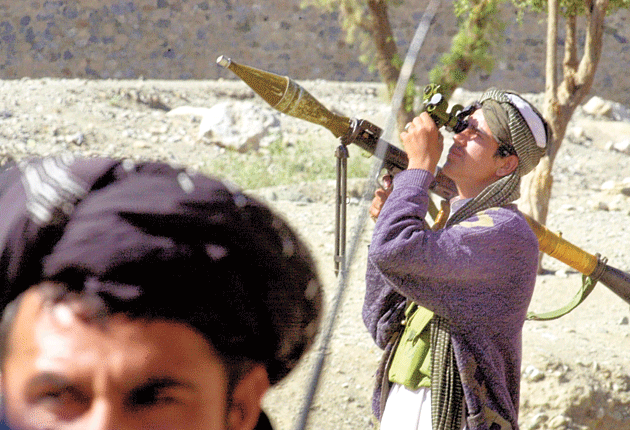Nato's dilemma: how to stop the Taliban's return

Nato and Afghan forces, which this week seized the last Taliban safe haven directly threatening Kandahar City, are drawing up plans to stop insurgents re-infiltrating the area and waging a campaign of intimidation against local inhabitants.
Earlier this week forces stormed the last cluster of villages under insurgent control in the nearby "Horn of Panjwaii" during a night-time helicopter raid. A Nato spokesman said resistance had been "light" but that troops were still clearing the area of home-made bombs.
The assault on Taloqan, a cluster of villages in the middle of the Horn, where inhabitants have typically leant towards the insurgents, is the culmination of months of fighting on the western fringes of the city.
The action is intended to drive the insurgents from the last of their safe havens directly affecting security in southern Afghanistan’s political and spiritual capital, and to provide breathing space for the West to manage its exit strategy.
The campaign is also the only occasion Nato will be able to wage an offensive with the full weight of President Obama's troop surge, before Nato forces begin a scheduled drawdown next year.
By smashing the Taliban leadership with Special Forces raids, which are running at record intensity, and denying the insurgents their most cherished objective – Kandahar City – Nato hopes to force the militants to sue for peace.
Already top Western diplomats are claiming that Taliban commanders are reaching out to President Hamid Karzai's government.
But analysts warn that there is little evidence of progress behind the bluster, and there is growing suspicion in Kabul that mention of peace talks is no more than a Nato propaganda campaign designed to sow distrust in the Taliban ranks.
On the eve of the assault on Taloqan, US Lt-General David Rodriguez, one of the most senior Nato officers in Afghanistan, quizzed Afghan commanders on how they planned to stop insurgents – known locally as "ghosts" – sneaking back into Panjwaii and waging an intimidation campaign.
"These operations you've been doing are going very well ... the challenge is, how do we continue to provide security for the people?" he asked at a vantage point overlooking the Horn. "What we need to do with every asset we have out there is figure out how to make it bigger than it is so that the people say, "OK, we'll be protected.'" At least three Afghan kandaks – about 2,100 men – and three US infantry companies have deployed to the area in the past fortnight.
A counter campaign by the Taliban, with an intention of spreading fear in the peninsula is a near certainty. Targeted assassinations of government officials and other figures of authority in Kandahar City have proven extremely effective. Following a string of murders, there are at least 600 local government job vacancies. With the area struggling to attract officials to govern, there is no reason for the insurgents to abandon the strategy.
Taliban commanders "take advice from [Pakistan's spy agency] the ISI, which tells them to kill the elders, the officials, the doctors, the engineers", a tribal elder from the Horn who had fled the fighting told The Independent. "This will put pressure on the people. Last year they killed many people in Panjwaii district, and the government couldn't stop this killing."
A major factor in whether the Taliban can claw back their influence in Panjwaii will be the Afghan government's ability to deliver law and order, a huge unknown and the Achilles' heel of Nato efforts to stabilise the country.
Join our commenting forum
Join thought-provoking conversations, follow other Independent readers and see their replies
Comments
Bookmark popover
Removed from bookmarks